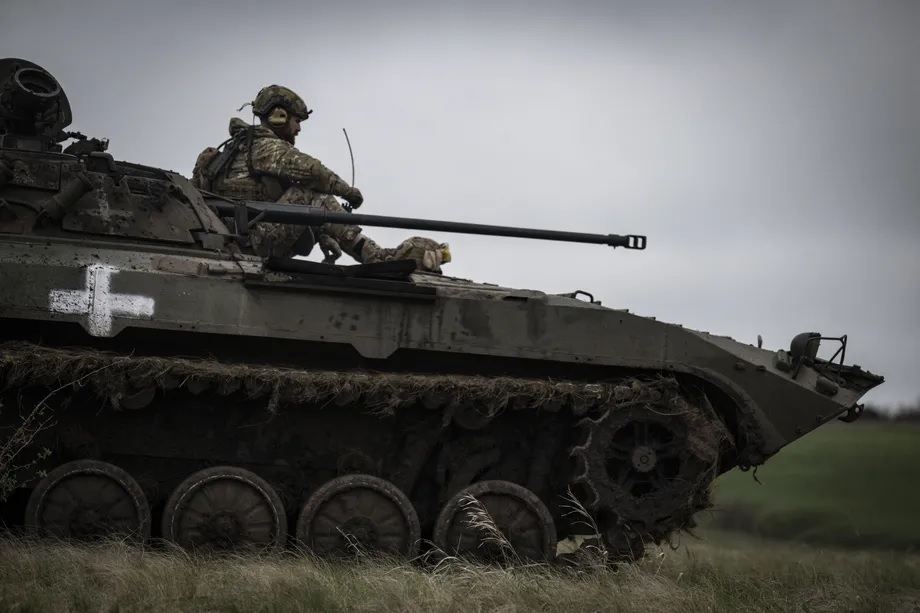Jen Kirby is a senior foreign and national security reporter at Vox, where she covers global instability.
“Counteroffensive and defensive actions are taking place in Ukraine. At what stage, I will not say in detail,” Ukrainian President Volodymyr Zelenskyy said this weekend during a news conference.
Zelenskyy’s comments were perhaps the closet confirmation yet that the Ukrainian counteroffensive is finally here, after weeks of anticipation, and speculation, about the movements of Ukrainian troops.
But the is-it-or-is-it-not-officially-happening question about the counteroffensive has always been besides the point. Ukraine has closely guarded its operational security (even from its Western partners to a degree), and Kyiv is not going to make any public announcements that could jeopardize its strategy or give away its plans. Or as Ukraine’s Ministry of Defense tweeted Monday: “Shhhhhh.”
The counteroffensive really exists on a sort of continuum. All the ingredients of a successful counteroffensive have already been unfolding over the past weeks. Ukraine has targeted Russian frontlines with long-range attacks and carried out localized attacks in places like Bakhmut. Ukraine has its fingerprints on diversionary tactics, like the cross-border attacks into Belgorod led by pro-Ukrainian militias. “Ukrainian forces are already shaping the battlefield,” said Robert Murrett, a former naval intelligence officer and professor of practice at Syracuse University.
As those tactical operations continue, as more Western tanks and newly NATO-trained Ukrainian troops move to the frontlines, as Ukraine advances toward or challenges Russian defensive lines and fortifications, all of it will help reveal the course of the counteroffensive. But the details are mostly just speculation at this point. And as experts emphasized, both Russia and Ukraine want to manipulate the narrative, and so information warfare is deliberately going to obscure what’s happening on the battlefield.
It will likely take more weeks, and maybe months, to fully understand what this counteroffensive might yield. “Everything doesn’t need to happen in a span of a few weeks. It can be a bigger process, and it most likely will also be a bigger process,” said Emil Kastehelmi, an open source intelligence and military analyst.
“Whatever happens at the moment might not determine the whole course of the counteroffensive,” Kastehelmi added.
The only thing that’s actually certain is that Russia’s war in Ukraine is entering a new phase: an all-out effort by Ukraine to liberate Russian-occupied territory and to reshape the course of the war. Ukraine could retake a lot of territory, but the amount likely matters less than how Kyiv alters the strategic picture, seizing key areas that would leave Russia exhausted and in a weaker position than before. Kyiv must prove to its Western backers that it can put resources and advanced equipment to successful use, and reaffirm and bolster outside support.
Because whatever success looks like in the Ukrainian counteroffensive, it is unlikely to usher in the end of Russia’s war.
Where are we with the counteroffensive right now?
Ukrainian forces liberated the Kharkiv region in late summer 2022, and forced a Russian retreat to the other side of the Dnipro River in Kherson last November. (The area was inundated by an exploded dam this week.) Ukraine had momentum going into winter, though the war then entered something of a holding pattern: Fighting continued along the frontlines, but Russia also dug into its defensive positions. Russia launched an offensive this winter to try to seize Luhansk and Donetsk, but didn’t end up with that much to show for it, except for some minor territorial gains and, finally, after about nine months, Bakhmut, a mid-size city that isn’t all that strategically important.
Both Ukraine and Russia expended a lot of manpower and firepower in the battle over Bakhmut, a reality that hung over both Kyiv and Moscow as the world began expecting Ukraine’s counteroffensive this spring. The assumption was that Kyiv would launch such operations after receiving new military equipment and support from Western backers, after replenishing and training new troops, probably after mud season, and after Russia exhausted itself in its own offensive operations.
Those conditions have largely been met.
Counteroffensives, though, are complex, multifaceted operations, and they tend to unfold in phases. At least one of those phases has been happening: the so-called “shaping” or “preparation ” phase, as the military wonks might call it. It’s also pretty self-explanatory: Ukraine is trying to create battlefield conditions that will set its forces up for success once it starts the main event.
Ukrainian forces have attacked Russian troops along different parts of the frontlines, including at long ranges. They’re targeting and destroying supply lines. They’re engaged in sabotage, things like the cross-border attacks into Belgorod, and even that weird drone incident in Moscow, designed to divert Russian attention or resources. Ukraine is using these tactics to probe or soften Russian defenses, said Franz-Stefan Gady, a senior fellow at the International Institute for Strategic Studies, and also to “make sure that the Russians are spreading out along the frontline, not concentrating, also perhaps, [to] move away their operational reserves or commit their forces somewhere where the Ukrainians are not probably going to try their main effort.”
No one knows where that main effort (or efforts) is going to be, although experts and observers have some ideas of where Ukraine might try. One of these is around Zaporizhzhia, in the south, where Ukraine might try to push toward the Sea of Azov, allowing Ukraine to slice up Russia’s so-called “land bridge” linking Crimea to the rest of Ukraine, and potentially giving Kyiv a position to strike Crimea directly.



